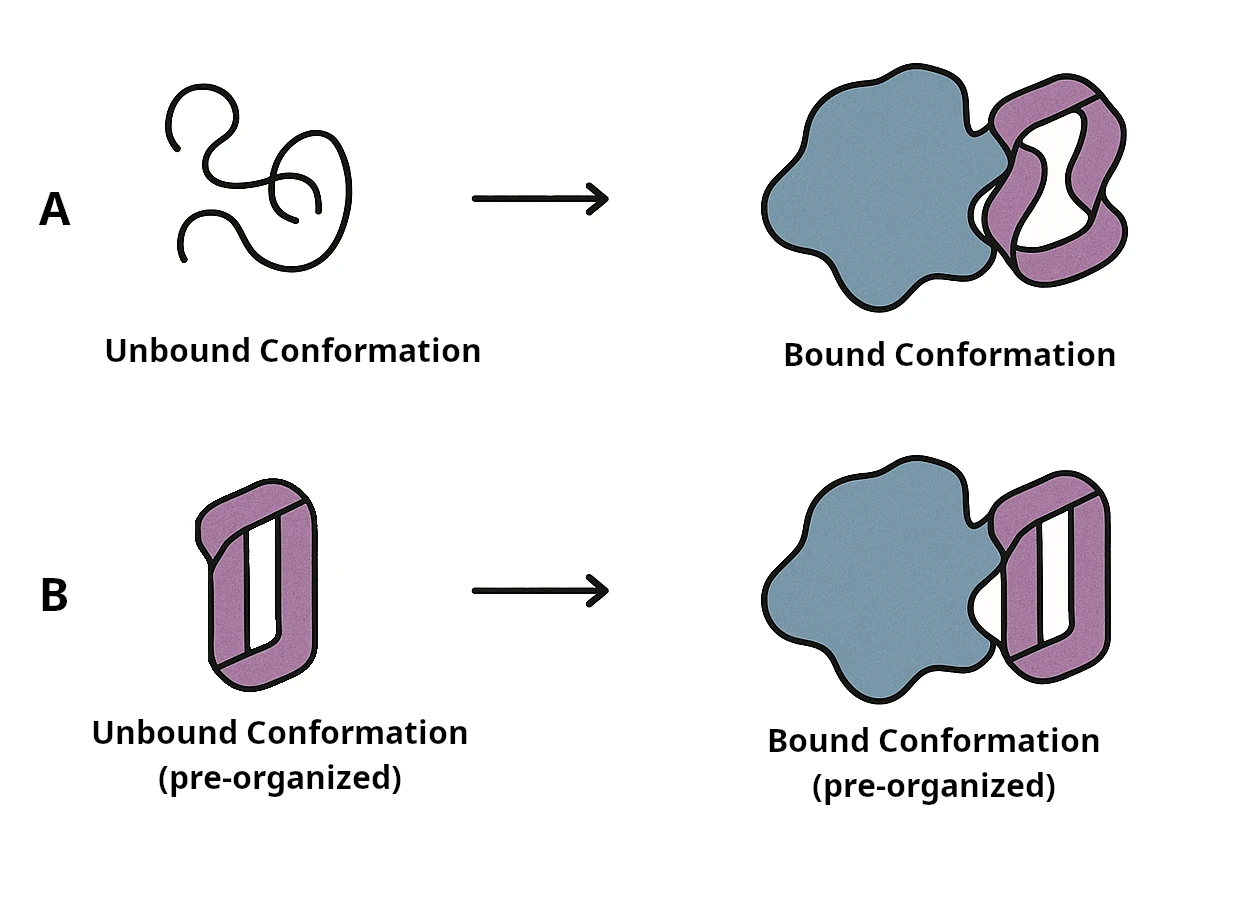Conformational Pre-Organization: The Silent Key To Effective Binder Design
Written by Keaun Amani | Published 2025-6-17
Written by Keaun Amani | Published 2025-6-17
In the realm of molecular binding, success hinges not only on where a molecule binds but also on how prepared it is upon arrival. This structural readiness, known as conformational pre-organization, is pivotal in designing high-affinity binders for therapeutics, diagnostics, and synthetic biology applications.
Pre-organization refers to the extent to which a binder—typically a designed protein or peptide—adopts a functionally relevant, folded structure prior to target interaction. A pre-organized binder is compact and structured, resembling its final, target-bound state, thereby minimizing the need for extensive conformational changes upon binding.
Conversely, disordered or flexible binders may require significant structural rearrangements to engage effectively, incurring energetic costs that can diminish binding efficiency.
Molecular binding involves a thermodynamic trade-off: the formation of favorable enthalpic interactions versus the loss of entropy due to reduced molecular disorder. Pre-organized binders experience a smaller entropic penalty upon binding, resulting in a more favorable Gibbs free energy (ΔG) and, consequently, higher affinity.
In contrast, flexible binders must overcome a significant entropic barrier to adopt the necessary conformation for binding, often leading to reduced affinity unless compensated by exceptionally strong target interactions.
Binding efficacy is also influenced by kinetics. Pre-organized structures can engage targets more rapidly due to a reduced conformational search space, facilitating quicker formation of the encounter complex. Disordered binders, requiring both folding and target recognition, may exhibit slower binding kinetics and an increased likelihood of non-productive interactions.
In computational design, particularly when employing generative models, ensuring pre-organization is crucial. Models that do not prioritize compact, well-folded structures may produce candidates that, despite appearing structurally viable, fail to form meaningful biological interactions due to internal disorganization.
| Binder | Structure Before Binding | Binding Behavior |
|---|---|---|
| A | Disordered, flexible coil | Slow, weak binding due to folding cost |
| B | Compact, pre-folded scaffold | Binds efficiently and strongly |
Even if both designs are spatially proximate to the target, Binder B is more likely to demonstrate functional viability.

In contemporary molecular design, conformational pre-organization is not optional but essential. Whether developing next-generation therapeutics, high-specificity biosensors, or synthetic biology components, pre-organization differentiates promising candidates from those that merely approximate success.
A binder that arrives folded, structured, and spatially poised for interaction minimizes thermodynamic penalties, accelerates engagement kinetics, and maintains structural fidelity. It doesn't just bind—it binds effectively, swiftly, and reliably.
As computational protein design advances, integrating pre-organization into model objectives, evaluation metrics, and selection pipelines will be paramount. The future of binder design lies in recognizing that structural readiness prior to contact is as critical as post-binding affinity.
Conformational Selection in a Protein-Protein Interaction Revealed by Dynamic Pathway Analysis
Conformational entropy in protein stability, molecular recognition and allosteric regulation
Computational design of ligand-binding proteins with high affinity and selectivity
Preorganization in biological systems: Are conformational constraints worth the energy?
For further insights into computational protein design and conformational pre-organization, consider exploring the following resources:
These resources provide comprehensive overviews and methodologies pertinent to the field of protein design, emphasizing the importance of structural pre-organization in achieving effective molecular binding.
By Keaun Amani
By Danial Gharaie Amirabadi
By Danial Gharaie Amirabadi
By Danial Gharaie Amirabadi
By Colorado Wilson
By Amélie Lagacé-O'Connor
Register for free — upgrade anytime.
Interested in getting a license? Contact Sales.
Sign up free